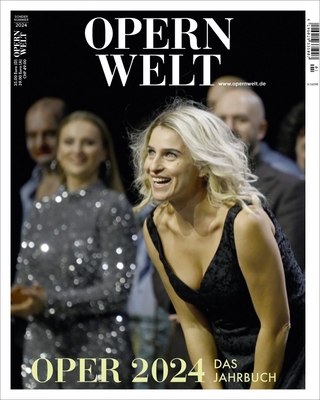
Beethoven's Symphony No. 9
Seiten
2017
Oxford University Press Inc (Verlag)
978-0-19-029970-5 (ISBN)
Oxford University Press Inc (Verlag)
978-0-19-029970-5 (ISBN)
Beethoven's Ninth Symphony has held musical audiences captive for close to two centuries. Honing in on the significance of the symphony in contemporary culture, this book establishes a dialog between Beethoven's world and ours. In particular, it outlines what is special about the Ninth in millennial culture, where music is encoded not only as score but also as digital technology.
Beethoven's Ninth Symphony has held musical audiences captive for close to two centuries. Few other musical works hold such a prominent place in the collective imagination; each generation rediscovers the work for itself and makes it its own. Honing in on the significance of the symphony in contemporary culture, this book establishes a dialog between Beethoven's world and ours, marked by the earthshattering events of 1789 and of 1989. In particular, this book outlines what is special about the Ninth in millennial culture. In the present day, music is encoded not only as score but also as digital technology. We encounter Beethoven 9 flashmobs, digitally reconstructed concert halls, globally synchonized performances, and other time-bending procedures. The digital artwork 9 Beet Stretch even presents the Ninth at glacial speed over twenty-four hours, challenges our understanding of the symphony, and encourages us to confront the temporal dimension of Beethoven's music. In the digital age, the Ninth emerges as a musical work that is recomposed and reshaped-and that is robust enough to live up to such treatment-continually adapting to a changing world with changing media.
Beethoven's Ninth Symphony has held musical audiences captive for close to two centuries. Few other musical works hold such a prominent place in the collective imagination; each generation rediscovers the work for itself and makes it its own. Honing in on the significance of the symphony in contemporary culture, this book establishes a dialog between Beethoven's world and ours, marked by the earthshattering events of 1789 and of 1989. In particular, this book outlines what is special about the Ninth in millennial culture. In the present day, music is encoded not only as score but also as digital technology. We encounter Beethoven 9 flashmobs, digitally reconstructed concert halls, globally synchonized performances, and other time-bending procedures. The digital artwork 9 Beet Stretch even presents the Ninth at glacial speed over twenty-four hours, challenges our understanding of the symphony, and encourages us to confront the temporal dimension of Beethoven's music. In the digital age, the Ninth emerges as a musical work that is recomposed and reshaped-and that is robust enough to live up to such treatment-continually adapting to a changing world with changing media.
Alexander Rehding is Fanny Peabody Professor of Music at Harvard University. His research interrogates intersections between music theory and history. His publications center on nineteenth-century music and on sound media, including Music and Monumentality (2009). His work has been recognized with a Guggenheim Fellowship and the Dent Medal.
Contents
Acknowledgements
Chapter 1: Beethoven's Ninth for a New Millennium
Chapter 2: Marking History
Chapter 3: Marking Hearing
Chapter 4: Marking Time
Chapter 5: Marking Form
Chapter 6: Marking Noise
Select Bibliography
| Erscheinungsdatum | 17.11.2017 |
|---|---|
| Reihe/Serie | Oxford Keynotes |
| Zusatzinfo | 21 line art; 13 halftone |
| Verlagsort | New York |
| Sprache | englisch |
| Maße | 208 x 140 mm |
| Gewicht | 204 g |
| Themenwelt | Kunst / Musik / Theater ► Musik ► Klassik / Oper / Musical |
| Kunst / Musik / Theater ► Musik ► Musiktheorie / Musiklehre | |
| ISBN-10 | 0-19-029970-3 / 0190299703 |
| ISBN-13 | 978-0-19-029970-5 / 9780190299705 |
| Zustand | Neuware |
| Informationen gemäß Produktsicherheitsverordnung (GPSR) | |
| Haben Sie eine Frage zum Produkt? |
Mehr entdecken
aus dem Bereich
aus dem Bereich
Mozart und der Abschied von der Aufklärung
Buch | Hardcover (2024)
C.H.Beck (Verlag)
28,00 €


